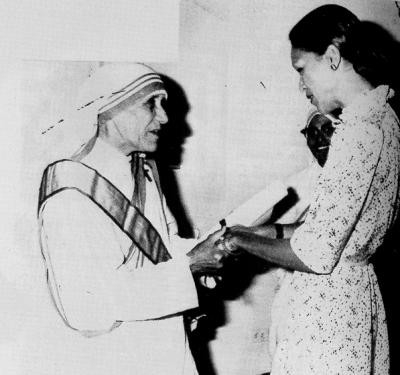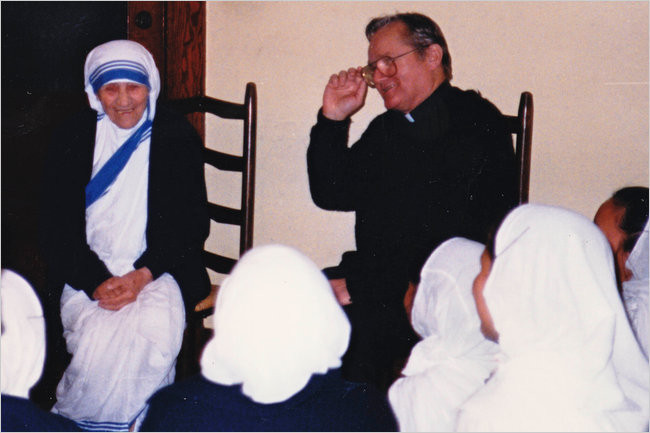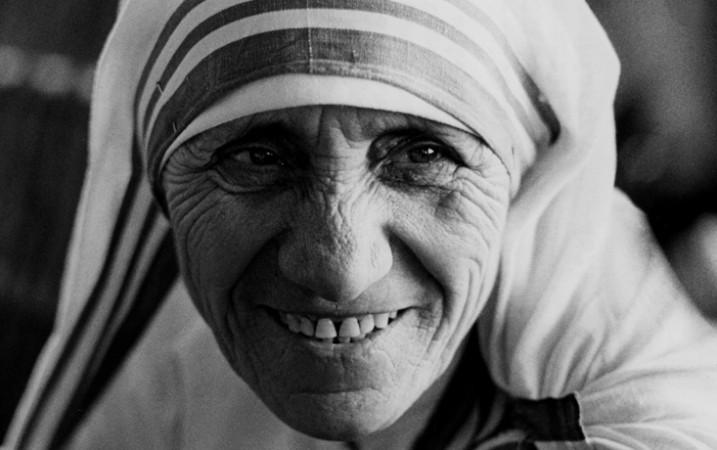Although Mother Teresa was beatified as a saint by the Catholic Church in 2003, apparently she was far from the saint the Church would lead you to believe. In fact, Mother Teresa isn’t even her real name; she was born Anjeze Gonxhe Bojaxhiu in Albania. But the issue of the pseudonym is not the end of the question for sure. Researchers today have called Mother Teresa an enterprising “PR ploy” by the Vatican to rehabilitate their tarnished image.
Mother Teresa’s claim to fame is helping poor around the world, but she did quite the opposite throughout her lifetime. Mother Teresa made niceties with right-wing Haitian Dictator Jean-Claude Duvalier and accepted money from him which had been stolen from Haiti’s poor. Duvalier was known for stealing millions from Haiti’s poor so that he could maintain his own lavish lifestyle. For example he spent $2 million of Haiti’s money only to pay for his extravagant wedding. Duvalier also profited from drug trafficking and selling the body parts of deceased Haitians for black-market transplants.

Mother Teresa rubbed elbows with another thief by the name of Charles Keating. If that name rings a bell for you, it should; Keating is the banker best known for defrauding American taxpayers out of over $3 billion during the savings and loan crisis of the ’80s and ’90s. Keating donated $1.25 million to Mother Teresa and lent her his private jet so that the missionary could jet set around the world. Keating would later be convicted in State and Federal courts of a long list of crimes including racketeering, fraud, and conspiracy. After Keating was convicted, Mother Teresa refused to return the stolen money and also applied to one of the courts to overturn his sentence.

What she did with the money remains in question. The care she gave to the sick and poor in her hospices was observed to be wholly unsanitary, medical care was wholly insufficient, and crucial pain management for the dying was cruelly inadequate. Her hospices were found to not even distinguish between terminally ill patients and those who could be cured. Consequently, patients with curable illness died from the poor, unsanitary treatment they received from Mother Teresa’s facilities.
In 1991, Robin Fox, editor of the British medical journal The Lancet visited the “Home for Dying Destitutes” in Calcutta (Kolkata) and described the medical care the patients received as “haphazard”. He observed that sisters and volunteers, some of whom had no medical knowledge, had to make decisions about patient care, because of the lack of doctors in the hospice. Fox specifically held Teresa responsible for conditions in this home, and observed that her order did not distinguish between curable and incurable patients, so that people who could otherwise survive would be at risk of dying from infections and lack of treatment.
Fox conceded that the regimen he observed included cleanliness, the tending of wounds and sores, and kindness, but he noted that the sisters’ approach to managing pain was “disturbingly lacking”. The formulary at the facility Fox visited lacked strong analgesics which he felt clearly separated Mother Teresa’s approach from the hospice movement. Fox also wrote that needles were rinsed with only warm water, which left them inadequately sterilised, and the facility did not isolate patients with tuberculosis. There have been a series of other reports documenting inattention to medical care in the order’s facilities. Similar points of view have also been expressed by some former volunteers who worked for Teresa’s order. Mother Teresa herself referred to the facilities as “Houses of the Dying” (to suggest that the purpose was accompanying the inmates to death and not healing?).

In 2013, in a comprehensive review covering 96% of the literature on Mother Teresa, a group of Université de Montréal academics reinforced the foregoing criticism, detailing, among other issues, the missionary’s practice of “caring for the sick by glorifying their suffering with mystical and religious implications instead of relieving it, her questionable political contacts, her suspicious management of the enormous sums of money she received, and her overly dogmatic views regarding, in particular, abortion, contraception, and divorce”. Questioning the Vatican’s motivations for ignoring the mass of criticism, the study concluded that Mother Teresa’s “hallowed image—which does not stand up to analysis of the facts—was constructed, and that her beatification was orchestrated by an effective media relations campaign”.
In addition to the collection of enormous donations from all around the world , another motivation for setting these hospices may have been less compassion and more fundamentalism. Mother Teresa callously encouraged those who worked in her hospices to baptize dying patients, regardless of the patient’s religious beliefs or consent. Mother Teresa’s fundamentalism stretched beyond the subject of baptism. She opposed contraception even in the cases of rape and incest.
Mother Teresa also defended a pedophilic priest named Donald McGuire, trying to get him leniency after he was convicted of raping children. She wanted him to be reinstated as a priest despite his heinous crimes.

The greatest irony of it all is that by the end of her life, Mother Teresa didn’t even believe in the fundamentalism she spouted or the religion she spent her life serving. After her death, letters Mother Teresa had written to the Vatican surfaced and revealed that she had stopped believing in the religion she plugged.
Source: The Lies Of Mother Teresa
